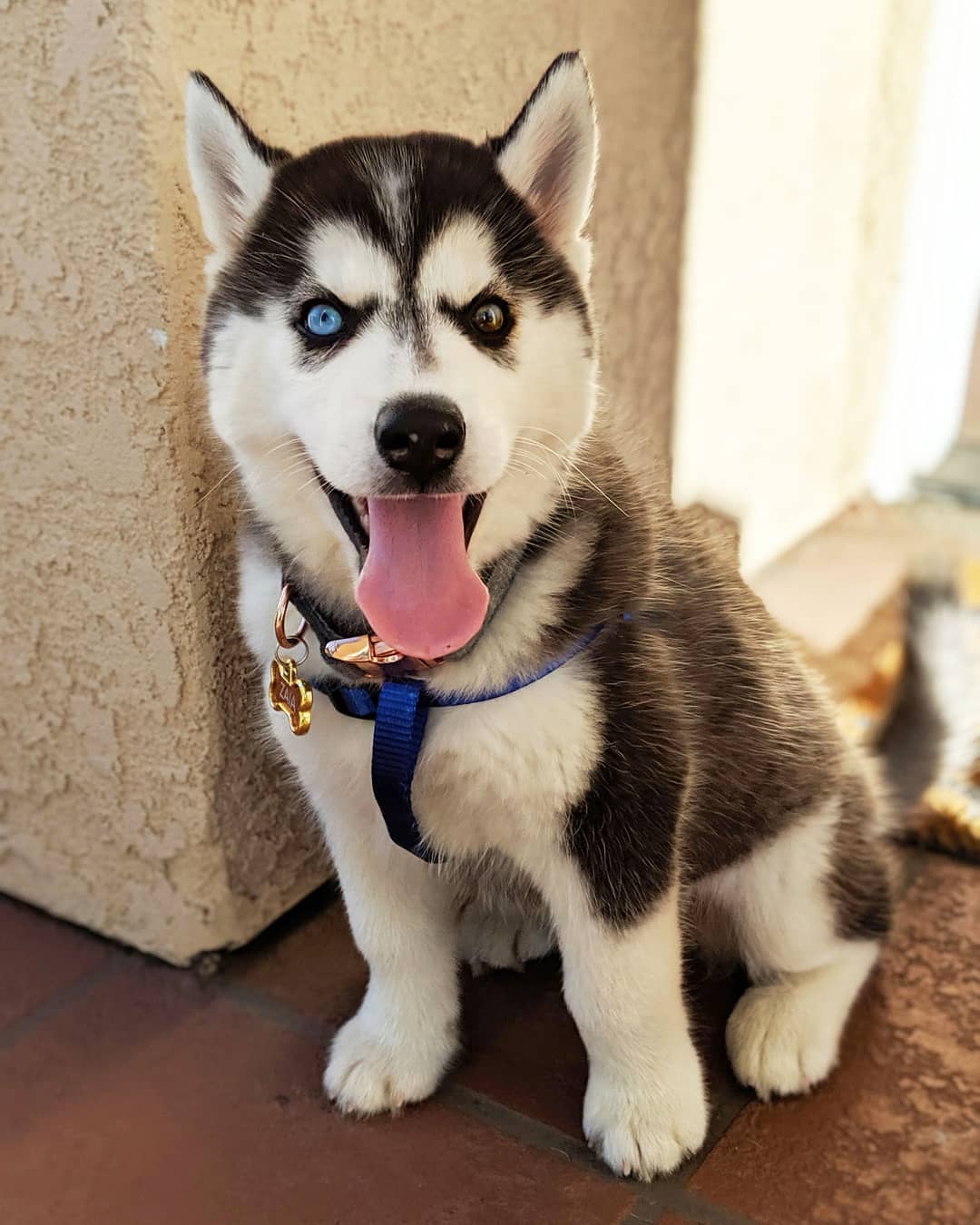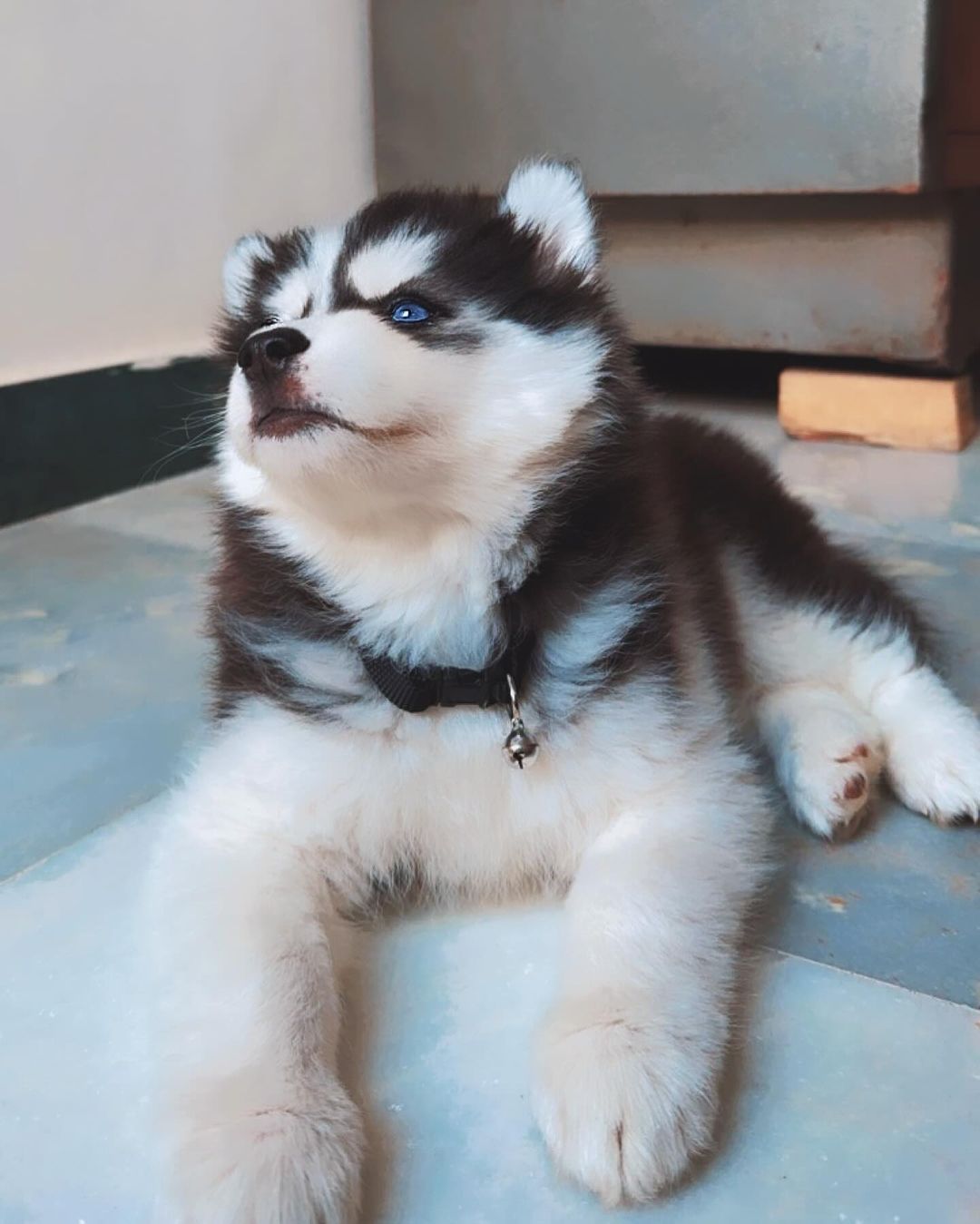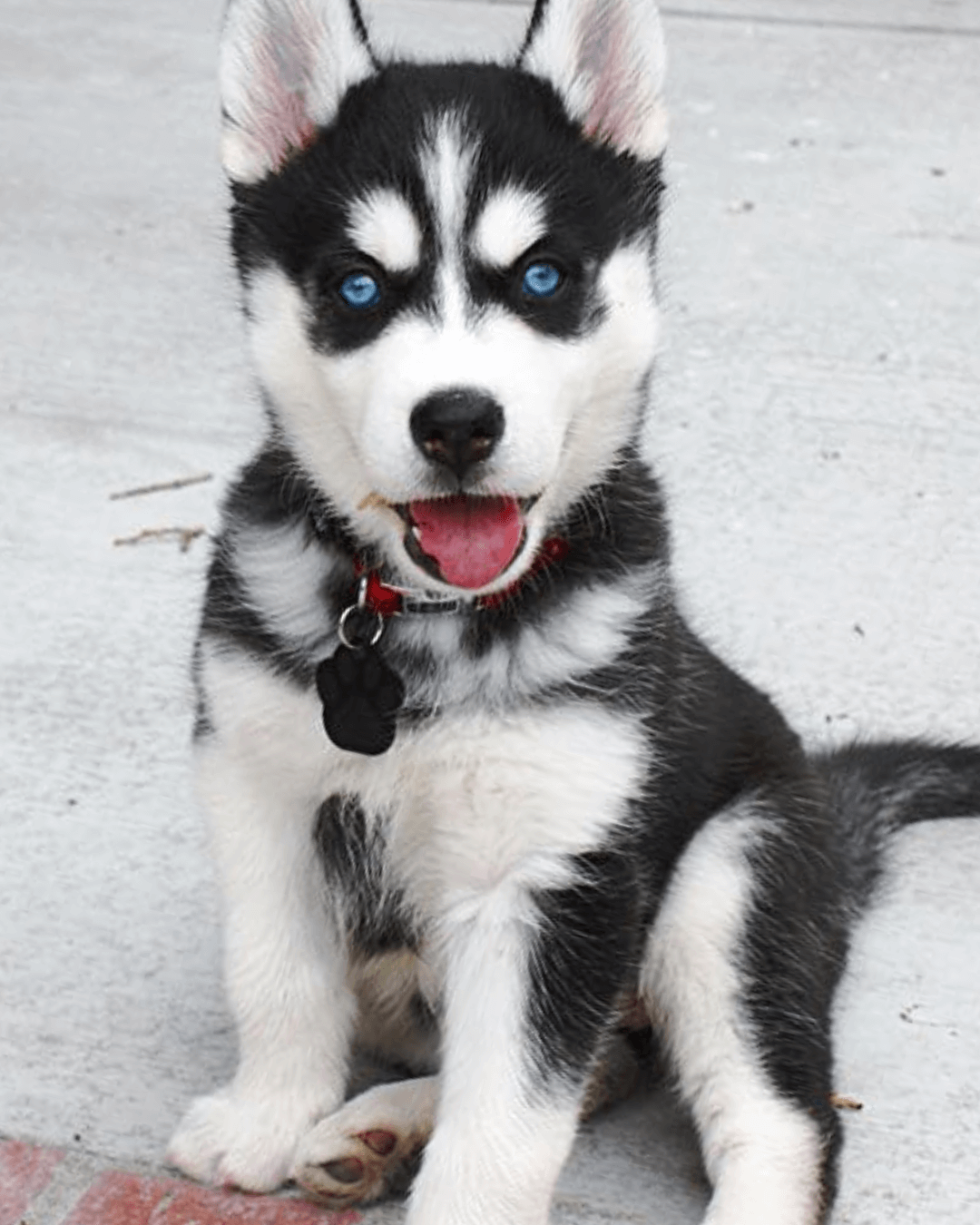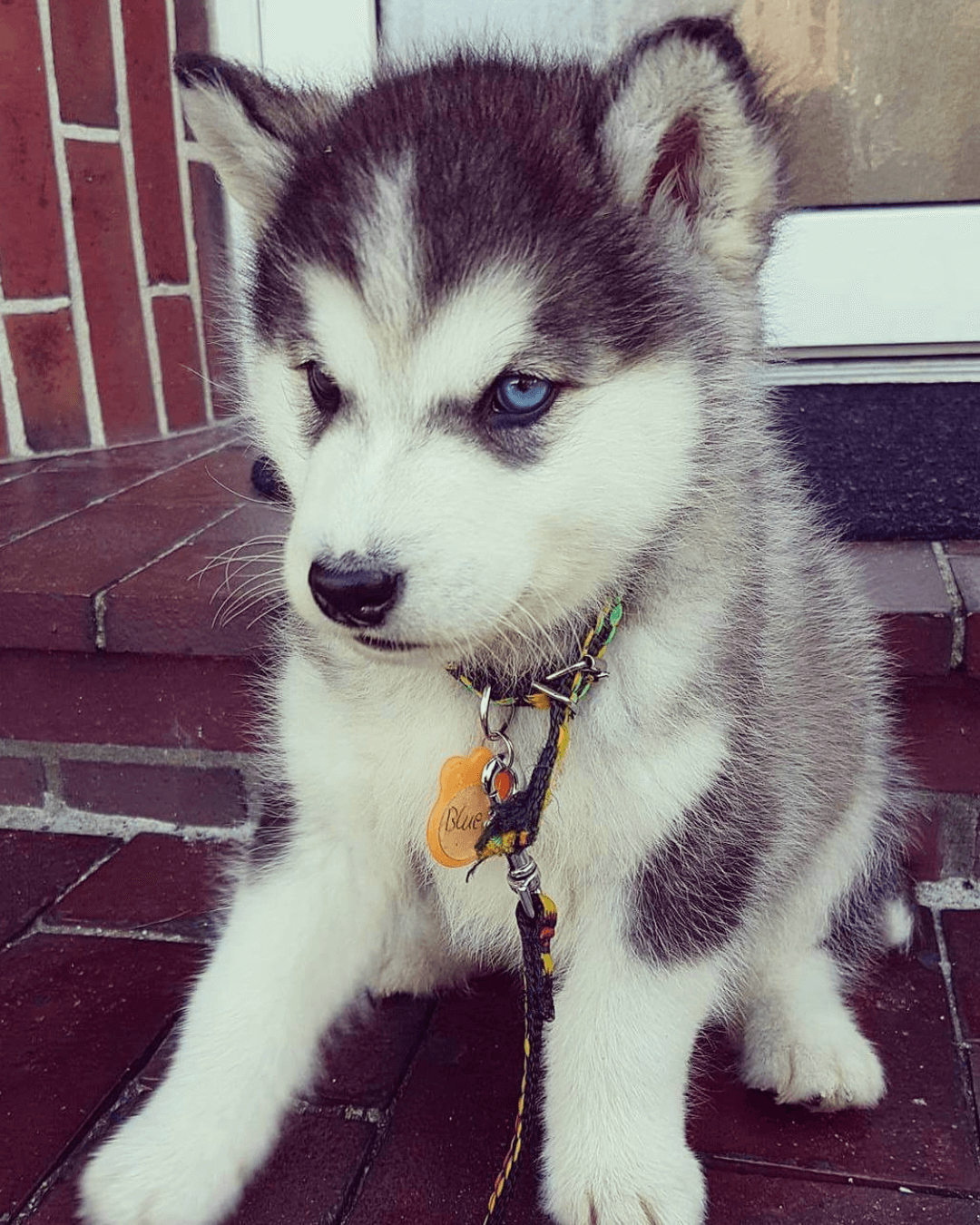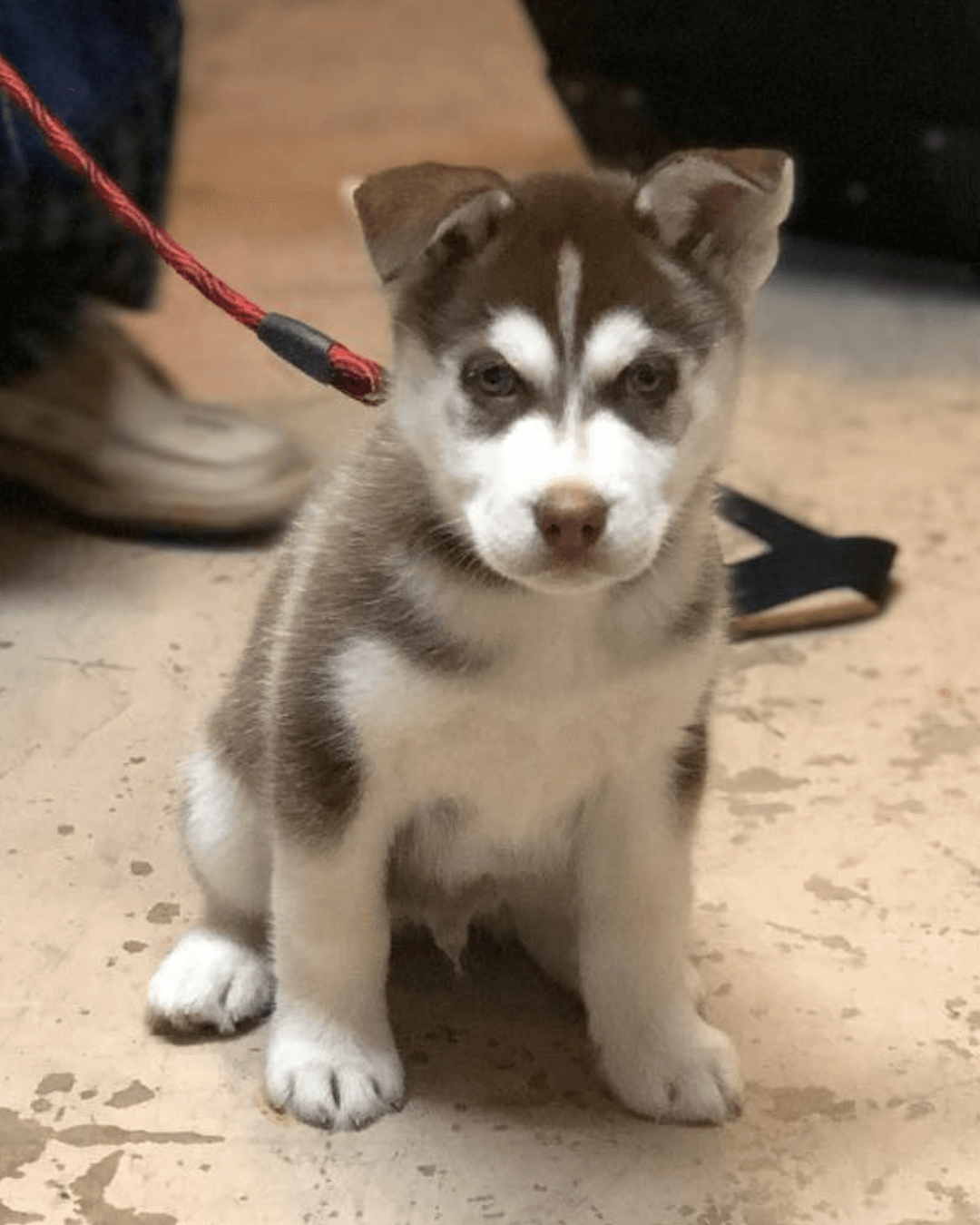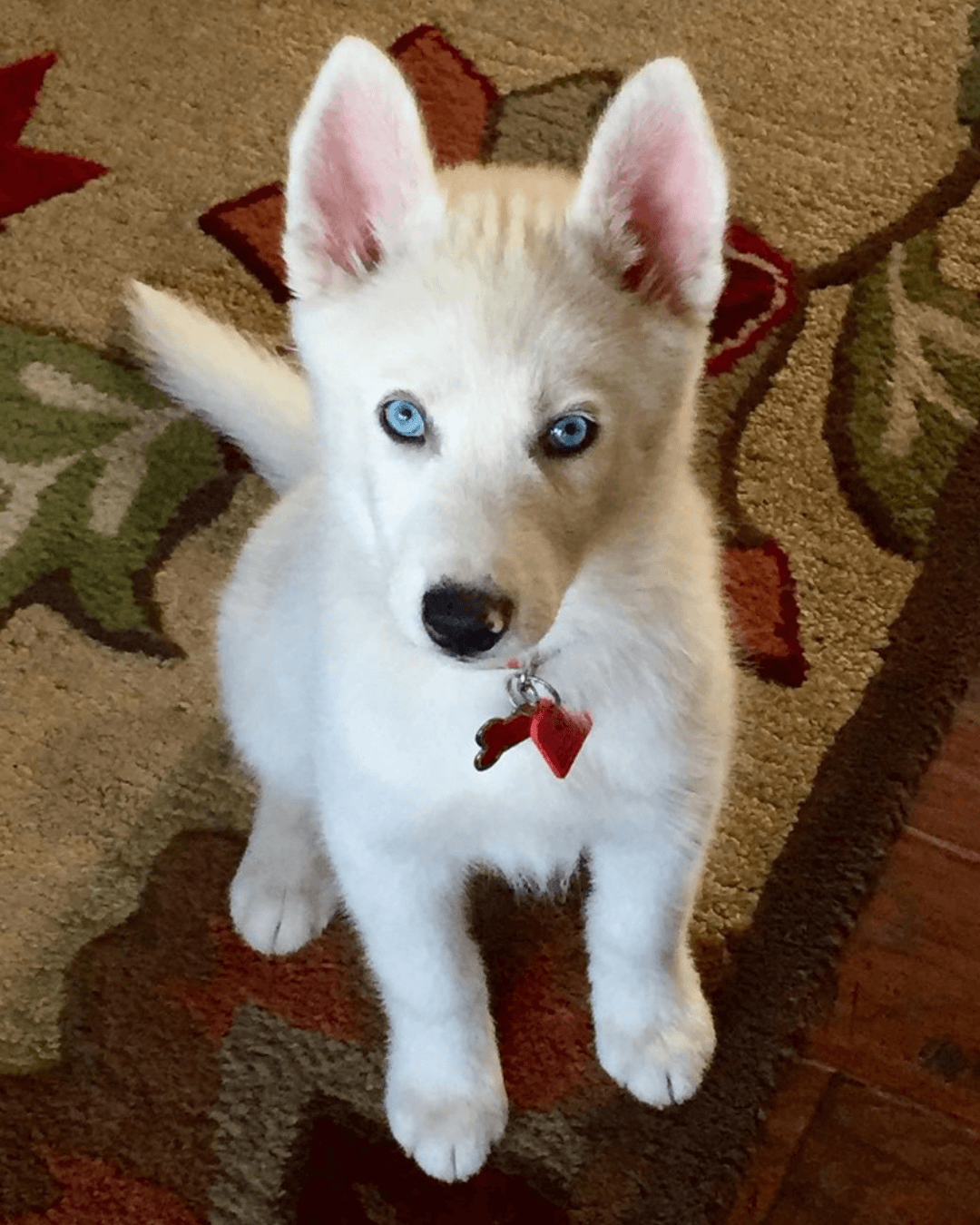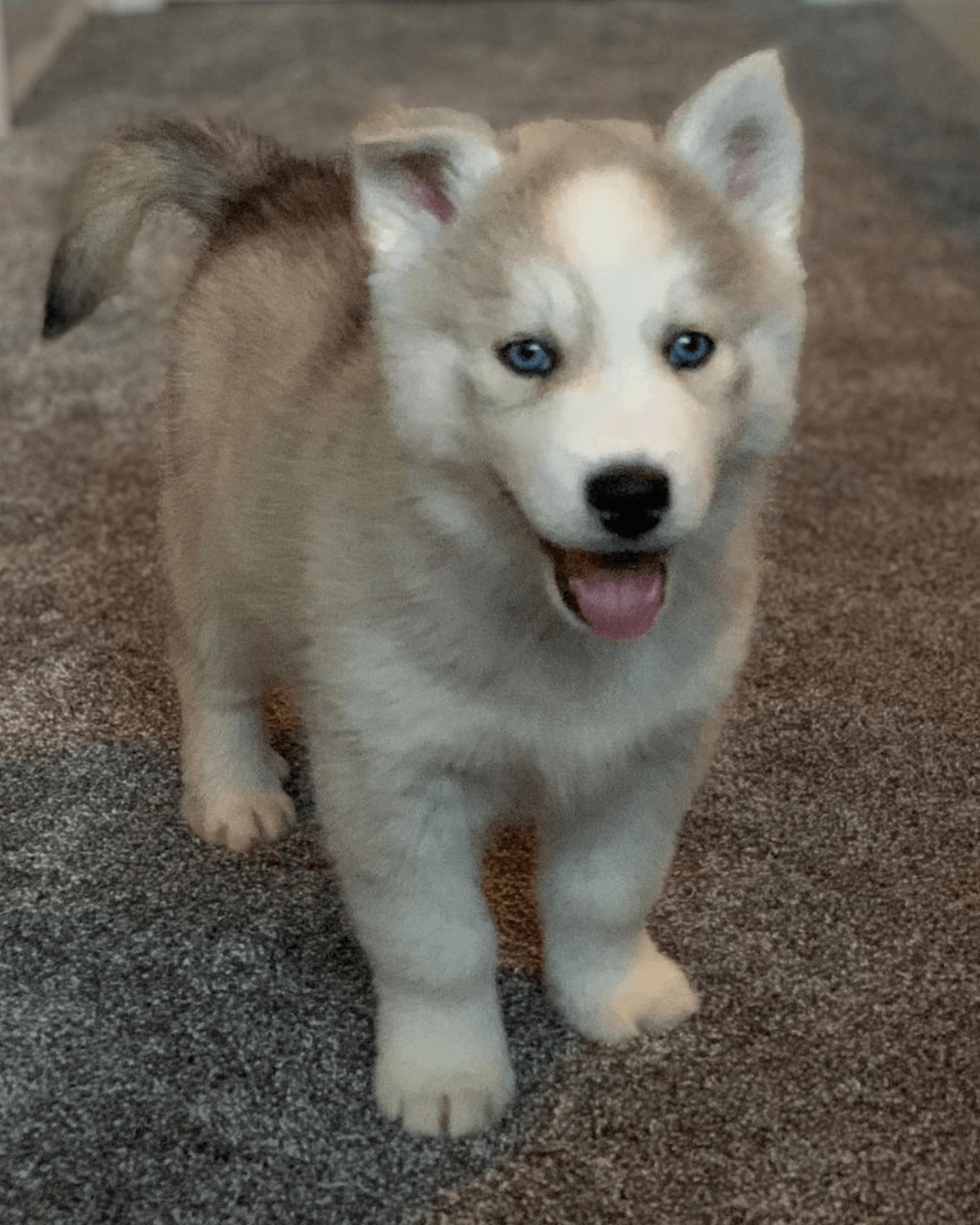Available Siberian Husky Breeds for Sale
Explore our selection of beautiful Siberian Huskies for sale or adoption! Each dog is lovingly raised, ensuring a friendly and healthy addition to your family. From playful pups to striking adults, find your perfect furry companion today!
Find Your Perfect Companion: Siberian Husky Dogs for Sale
Welcome to Zion Husky & Pomsky Breeder, your trusted and premier source for exceptional Siberian Husky dogs for sale. We are a family-run, ethical breeder with a deep-rooted passion for this magnificent breed. Our mission is to raise healthy, happy, and well-socialized Siberian Husky puppies and connect them with loving, responsible homes around the world. If you’ve been searching for a loyal, adventurous, and stunning companion, your journey begins here.
The Siberian Husky is a dog of undeniable beauty and incredible spirit. Known for their striking appearance—piercing eyes, thick coats, and dignified stance—they are so much more than a pretty face. Huskies are intelligent, loyal, and full of a mischievous charm that makes them truly unique. They are a highly social breed, thriving on human companionship and making them fantastic additions to active families.
The Zion Difference: Our Commitment to Husky Excellence
Choosing a breeder is the most important step in finding your new family member. At Zion Husky & Pomsky Breeder, we are committed to upholding the highest standards of animal welfare and ethical breeding. Our reputation as a responsible husky breeder is built on transparency, health, and a lifelong commitment to our dogs and their new families.
Unmatched Health and Wellness: The health of our Siberian Husky puppies is our top priority. Our parent dogs are carefully selected for their superior health, genetics, and temperament. Each puppy receives a comprehensive veterinary check-up, is up-to-date on vaccinations and deworming, and comes with a health guarantee for your peace of mind.
Early Socialization: Our puppies are raised in a nurturing, family environment. They are exposed to various sights, sounds, and interactions from a very young age, which helps them develop into confident, friendly, and well-adjusted dogs. This early start ensures they are ready to seamlessly transition into their new homes.
Expert Guidance and Support: Our relationship with you doesn’t end when you take your puppy home. We are always here to provide lifetime support and expert advice on everything from training and diet to general care. We are passionate about our huskies and love staying in touch with their new families.
Explore Our Puppies: A World of Unique Coats and Colors
The Siberian Husky is celebrated for its incredible diversity in appearance. We are proud to offer a wide range of purebred Siberian Husky puppies with various coat colors and eye colors, each with its own captivating appeal.
Classic Black and White Huskies: This is the most iconic and recognizable look. Our black and white Siberian Husky puppies often have the signature mask and markings that give them a striking, elegant appearance.
Red and White Huskies: Ranging from a light, coppery shade to a deep red, our red and white husky puppies have a warm and friendly look. This unique coloring is a favorite among those looking for a stand-out companion.
Agouti and White Huskies: Known for their wolf-like, wild appearance, the agouti husky has a complex mix of gray, black, tan, or red on each hair shaft. These puppies have a rugged beauty that is truly captivating.
Gray and White Huskies: A timeless and popular choice, our gray and white husky puppies have a classic look that captures the spirit of the breed. Their coats can range from a light silver to a deep charcoal gray.
Pure White Huskies: Rare and majestic, a pure white husky is a beautiful sight. These dogs have a pristine, all-white coat that makes them look as if they’ve stepped out of a winter wonderland.
Eye-Catching Eye Colors and Other Unique Features
The eyes of a Siberian Husky are often the first thing people notice. We offer puppies with a stunning variety of eye colors, each adding to their unique charm.
Blue Eyes: The most famous and sought-after feature, a blue-eyed husky for sale has an intense, ice-like gaze that is both beautiful and captivating.
Brown Eyes: Warm, intelligent, and expressive, brown eyes are equally common and beautiful. A brown-eyed husky has a soulful look that conveys deep loyalty and affection.
Bi-Colored Eyes (Heterochromia): This genetic trait gives a husky one eye of a different color from the other (e.g., one blue and one brown). A bi-eyed husky is a true rarity and a showstopper.
Parti-Colored Eyes: Also known as “cracked” eyes, this is when one eye has a mixture of two colors, such as a swirl of blue and brown in the same iris. This is a very rare and fascinating feature.
Finding Your Husky: We Ship Nationwide and Worldwide
We understand that the perfect puppy might not be in your backyard. We have extensive experience safely shipping our Siberian Husky dogs for sale to major cities and regions across the United States, including New York, California, Florida, and Texas. Our puppies have found loving homes in metropolitan areas like Los Angeles, Houston, and Chicago.
We also offer secure and reliable international shipping to countries with high demand, such as Canada, the United Kingdom, Australia, and Germany. Our team handles all the logistics and paperwork to ensure a smooth and stress-free process, giving you confidence in your decision to buy a husky puppy online.
The Buying Process: Bringing Your Husky Home
We have designed a simple, transparent process to help you find and bring home your new companion.
Browse Our Puppies: Check our “Available Puppies” page for detailed profiles on our current litters.
Submit an Application: Once you find a puppy you love, fill out our application form.
Consultation and Finalization: We will contact you to discuss your application, answer your questions, and finalize the adoption details.
Welcome Your New Family Member: We provide all the necessary health records, registration papers, and a puppy care kit to get you started on your new adventure.
Your journey to finding a loyal and loving Siberian Husky starts here. We are passionate about what we do and are dedicated to helping you find the perfect puppy that will bring years of joy and companionship to your life.
Frequently Asked Questions
Here are 10 frequently asked questions about Siberian Huskies. These detailed answers are designed to help you understand this breed better, especially if you are considering adopting a Husky.
Siberian Huskies are medium-sized working dogs known for their striking appearance and energetic nature. They typically weigh between 35-60 pounds and stand about 20-24 inches tall at the shoulder. Huskies have a thick double coat, erect triangular ears, and distinctive facial markings that vary from dog to dog. Their most notable feature is their bright blue or multi-colored eyes, which can be a captivating aspect of their personality.
Huskies are known for being friendly, outgoing, and social. They thrive in active environments and require regular exercise to keep them healthy and happy. Their playful demeanor makes them great companions for families and individuals alike. However, they can also be independent and stubborn, which can pose challenges during training.
Yes, Siberian Huskies can make excellent family pets! They are known for their friendly and affectionate nature, making them great companions for children. Huskies are generally good with other pets as well, especially when socialized from a young age. Their playful energy encourages active play, which can help foster strong bonds between your Husky and family members.
However, it’s important to note that Huskies have a strong prey drive due to their history as working dogs. This means they may chase smaller animals, so supervision is necessary when they are around other pets. Additionally, early socialization and training are crucial to ensure they develop into well-mannered family members.
Siberian Huskies are high-energy dogs that require a significant amount of exercise. On average, they need at least 1 to 2 hours of physical activity each day to keep them mentally and physically stimulated. This can include long walks, runs, playtime in a secure yard, or engaging in dog sports like agility or sledding.
Without adequate exercise, Huskies can become bored and may exhibit destructive behaviors, such as chewing or digging. Regular exercise helps channel their energy and maintain their overall health. Additionally, mental stimulation through training and interactive toys is essential to keep them engaged.
Yes, Siberian Huskies are known for their heavy shedding. They have a thick double coat that helps protect them from harsh weather conditions, but this also means they shed quite a bit, particularly during seasonal changes. Huskies typically shed year-round, but they experience two major shedding seasons—in spring and fall—when they “blow” their coats.
Regular grooming is essential to manage shedding. Brushing your Husky at least 2-3 times a week can help reduce loose fur around your home. During shedding season, daily brushing may be necessary to keep up with the amount of hair they shed. Additionally, maintaining a healthy diet can contribute to a healthy coat.
Siberian Huskies are intelligent dogs, but they can also be stubborn and independent, which may present challenges during training. They require consistent, positive reinforcement methods to be effectively trained. Early socialization and obedience training are important to help them learn basic commands and manners.
Using treats, praise, and play as rewards can encourage positive behavior. Keep training sessions fun and engaging, as Huskies can become bored with repetitive tasks. It’s also helpful to establish yourself as a confident leader, as this breed respects strong, assertive handlers.
While Siberian Huskies are generally healthy dogs, they can be prone to certain health issues. Some common concerns include:
- Hip Dysplasia: A genetic condition that affects the hip joint’s normal development, leading to arthritis or pain.
- Eye Conditions: Huskies can be susceptible to cataracts and progressive retinal atrophy (PRA), which can lead to vision loss.
- Hypothyroidism: A condition where the thyroid gland doesn’t produce enough hormones, leading to various health issues.
Regular veterinary check-ups can help monitor your Husky’s health and catch any potential issues early. Responsible breeding practices also play a crucial role in reducing the risk of genetic health problems.
While Siberian Huskies can adapt to apartment living, it is not ideal unless they receive sufficient exercise and mental stimulation daily. Huskies require plenty of space to move around and play, so living in an apartment may necessitate extra effort to ensure they get enough activity.
If you choose to keep a Husky in an apartment, be prepared to take them for long walks multiple times a day and provide them with plenty of playtime. Access to a nearby dog park or open space can also be beneficial for giving them the exercise they need.
Yes, Siberian Huskies are generally good with children. They are known for their playful and friendly nature, making them suitable companions for families. However, as with any breed, it’s essential to supervise interactions between your Husky and young children to ensure safety.
Teaching children how to interact appropriately with dogs and respecting their boundaries is crucial. Early socialization and training can help your Husky develop good manners around children and other pets, fostering a harmonious household environment.
The average lifespan of a Siberian Husky is typically between 12 to 15 years. Like all breeds, their lifespan can be influenced by factors such as genetics, diet, exercise, and overall care. Providing a balanced diet, regular veterinary check-ups, and a healthy lifestyle can contribute to a longer, healthier life for your Husky.
Being proactive in maintaining their health and addressing any issues early can help you enjoy many happy years with your beloved Siberian Husky!
The cost of caring for a Siberian Husky can vary depending on several factors, including location and individual needs. Here are some estimated costs to consider:
- Initial Adoption Fee: This can range from $1000 to $3,500, depending on the breeder or rescue organization.
- Food: Expect to spend around $50-$100 per month on high-quality dog food.
- Routine Veterinary Care: Annual check-ups, vaccinations, and preventive care can cost between $300 and $600 annually.
- Grooming: Regular grooming supplies and professional grooming services can add another $50-$200 annually.
Be sure to budget for additional expenses, such as training, toys, and emergency veterinary care. Owning a Husky requires a commitment to their well-being and happiness.
